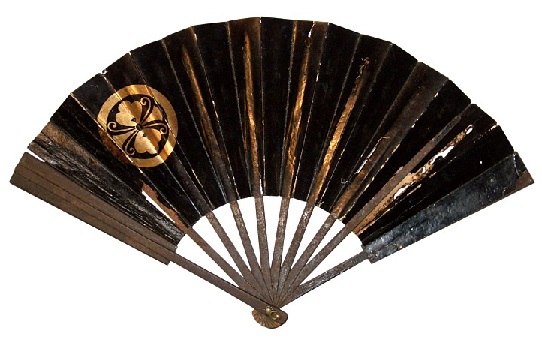Tessen – Japanese War Fans: The Ultimate Guide
Welcome to our comprehensive guide to Tessen, the Japanese war fans that were used in ancient Japan. In this guide, we will explore the history, design, and usage of Tessen, and provide you with all the information you need to know about these fascinating weapons.
History of Tessen
Tessen, which literally means “iron fan”, originated in Japan during the feudal period. These fans were not used as cooling devices but rather as weapons. Tessen were used by Samurai warriors as a concealed weapon, especially by women warriors or “Onna-bugeisha.” They were often used as a means of self-defense in situations where swords were not allowed, such as in the court of a lord or emperor.
Tessen Design
Tessen were usually made of iron or steel, and could be as small as a folding fan or as large as a traditional fan. They had a sturdy frame, with ribs that were made of metal instead of wood. The ribs were designed to be sharp and could be used to strike an opponent, while the handle could be used to strike or stab an opponent.
The Tessen were also designed to be quiet, which made them perfect for use in situations where silence was required. The fans were often decorated with beautiful artwork or patterns, which made them a prized possession of the Samurai.
Tessen Components
-
Ribs: The structure of a Tessen is dependent on a series of ribs made from iron or wood, which are connected by a pivot. This allows the fan to be folded and unfolded seamlessly. For added strength during blocking and striking, the outer ribs often have iron plates for reinforcement.
-
Slats: These are typically made from iron or metal alloys. When folded, they form a compact weapon that can be concealed easily. To showcase the craftsperson’s expertise, the slats are occasionally engraved or decorated with intricate designs.
-
Aesthetic Features: Despite being a combat tool, the Tessen still exhibits elements of traditional Japanese fans. The slats are frequently embellished with artwork, calligraphy, or gold leaf, making them visually appealing.
As time progressed, the design elements of Tessen underwent changes in terms of their materials, dimensions, and adornments. Some Tessen were made more decorative, while others were centered around practicality. This variety mirrors the distinctive artistry and regional differences inherent in Tessen manufacturing.
Tessen Construction: A Detailed Look at the Design of Japanese War Fans
Tessen, the Japanese war fans, were not only known for their deadly potential in close combat but also for their unique design. In this section, we will take a detailed look at the construction of Tessen and explore how their design contributed to their effectiveness as a weapon.
Frame and Ribs
The frame of a Tessen was made of iron or steel, with the ribs of the fan made of the same material instead of wood. The ribs were designed to be sharp and could be used to strike an opponent, while the handle could be used to strike or stab an opponent.
The sharp ribs of a Tessen were also used to block incoming attacks or to parry an opponent’s weapon. This made them a versatile weapon, as they could be used both offensively and defensively.
Design and Decoration
Tessen were not only designed to be effective weapons, but they were also works of art. The fans were often decorated with intricate artwork or patterns, making them prized possessions of the Samurai. The design and decoration of a Tessen were also important in terms of its effectiveness as a weapon.
The weight and balance of a Tessen were carefully considered during its construction. This was to ensure that it could be wielded effectively in close combat situations. The sharp ribs of the fan also had to be designed in a way that allowed them to be concealed when the fan was closed.
Silent and Deadly
One of the most unique aspects of a Tessen was its ability to be used silently. The sharp ribs of the fan were designed to be quiet when struck together. This made them perfect for use in situations where silence was required, such as in the court of a lord or emperor.The quiet nature of Tessen also made them perfect for surprise attacks. An opponent may not even know they were being attacked until it was too late, giving the attacker a significant advantage.
Tessen construction was a careful process that considered not only the effectiveness of the weapon but also its design and decoration. The sharp ribs of the fan, made of metal instead of wood, were versatile and could be used both offensively and defensively. The weight and balance of the fan were also important considerations during its construction, as was its ability to be used silently. Tessen were not only deadly weapons but also works of art, and their unique design and construction contributed significantly to their place in Japanese history.
Usage of Tessen
Tessen were used in close combat situations, where they could be used to strike an opponent’s face or body. They were also used to block incoming attacks or to parry an opponent’s weapon. Tessen could be thrown at an opponent, much like a throwing star, or they could be used to distract an opponent before striking with another weapon.
Tessen were also used as signalling devices, with different movements of the fan indicating different commands or messages to other warriors on the battlefield.
Tessenjutsu and Training
Tessenjutsu, the martial art dedicated to the Tessen, teaches its practitioners to handle the fan with accuracy and elegance, turning it into a multifaceted weapon.
Core Tessen Techniques
-
Defensive Actions: Tessenjutsu places a strong emphasis on using the Tessen for defensive purposes, allowing practitioners to block, parry, and deflect incoming strikes. Thanks to its robust construction, the Tessen can resist attacks from swords, knives, and other weaponry.
-
Offensive Actions: Beyond its defensive uses, the Tessen also has offensive capabilities. Rapid and forceful hits, thrusts, and slashing motions can be used to disarm, immobilize, or wound an adversary.
Training and Practice Regimens
Training in Tessenjutsu requires strenuous practice to master the fluid movements and techniques of the fan. Students begin by learning basic poses, footwork, and proper handling techniques before moving on to more complex maneuvers. Kata, or prearranged routines, aid practitioners in refining their skills and establishing muscle memory.
Modern Tessen and Its Cultural Influence
-
Tessen in Modern Martial Arts: Tessenjutsu is currently practiced by martial artists who value its historical and cultural importance. The discipline is taught in traditional Japanese martial arts schools, ensuring the preservation of the Tessen’s heritage for future generations.
-
Tessen as a Japanese Cultural Icon: The Tessen has emerged as a symbol of Japanese culture, epitomizing the blend of refinement and martial skill. It is a common theme in art, literature, and cinema, reflecting the country’s rich history and customs.
-
Tessen-Inspired Art, Fashion, and Design: Contemporary creatives have taken inspiration from the Tessen, integrating its design elements into various forms. From fashion accessories to interior decor, the Tessen’s impact is visible in modern aesthetics.
Tessen in Popular Culture
Tessen have been featured in many Japanese movies and TV shows, and are often depicted as the weapon of choice for female warriors. They have also been featured in video games, such as the popular game series “Ninja Gaiden.”
Tessen have also been used in modern times in martial arts training, such as in the art of Tessenjutsu. This art involves using the fan as a weapon and includes both defensive and offensive techniques.
Final Thoughts
Tessen are a fascinating part of Japanese history and culture. These weapons were not only beautiful but also deadly in the hands of a skilled warrior. They were used as a means of self-defense and as a signaling device on the battlefield. Although they are no longer used in modern combat, they are still appreciated for their unique design and historical significance.
Eager for More Details?
We hope you appreciated this article. For more information on traditional martial arts weaponry, we suggest reading the subsequent articles.
Next Martial Arts Weapons article: Tetsubishi – Metal Caltrop: The Ultimate Guide
Previous Martial Arts Weapons article: Tekko: Okinawan Brass Knuckles
Review this informative piece that provides a comprehensive overview of Martial Arts Weapons right here at Dojo Directory.


